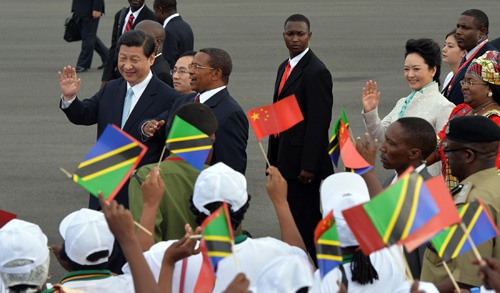|
 |
|
Chinese President Xi Jinping pays a visit to Tanzania in 2013 (FILE) |
Economic exchange
Chinese people began to learn about Tanzania when the construction of the Tazara Railway started, which serves as witness to the friendship between the two countries. But in recent years, the Tazara Railway is facing pressing problems such as aging equipment and capacity shortage. According to Cao, an upgrading program is being developed to bring the railway back to its expected efficiency under the cooperation between the two governments.
China's investment in Tanzania has expanded from construction, textile and transportation to agriculture, pharmaceutical products, mineral development, and daily necessities. At the end of 2013, China, with the investment of $550 million, became Tanzania's largest trade partner and the second largest source of foreign direct investment. Currently, there are around 500 Chinese enterprises in Tanzania which create 150,000 jobs for the locals.
A new and greater cooperation, Bagamoyo Port and Industrial Zone Project, was signed during President Xi's visit to Tanzania in 2013. John H. Haule, Permanent Secretary of the Tanzanian Ministry of Foreign Affairs and International Cooperation, believes that Bagamoyo and Shenzhen have similar geographical advantages. Based on the successful experience of the Shenzhen Special Economic Zone, Bagamoyo has a great chance to become the "Shenzhen of Tanzania," promoting the overall economic development of Tanzania.
Connecting Tanzania with China, the Middle East and Europe, Bagamoyo will be completed in three years, with a handling capacity of 20 million containers per year (the current capacity of Dar es Salaam Port is 800,000 containers). It will also house facilities like a distributing center and development zone.
According to Haule, Bagamoyo will be made as industrially developed and populous as Shenzhen. At the same time, Bagamoyo will absorb a variety of industries, the processing and manufacturing industry in particular, which will attract a lot of labor force. He said, for the Tanzanian Government, Bagamoyo will be a driver for economic development; and for ordinary people, it will help them to raise income.
The projected cost of Bagamoyo Port is as high as the Tazara Railway. The construction will be financed by the Hong Kong-based China Merchants Holdings (International) Co. with an investment of $10 billion.
|
